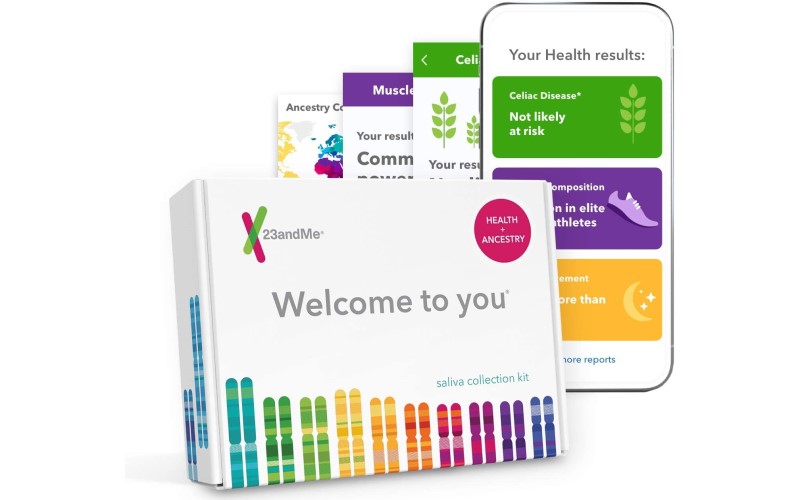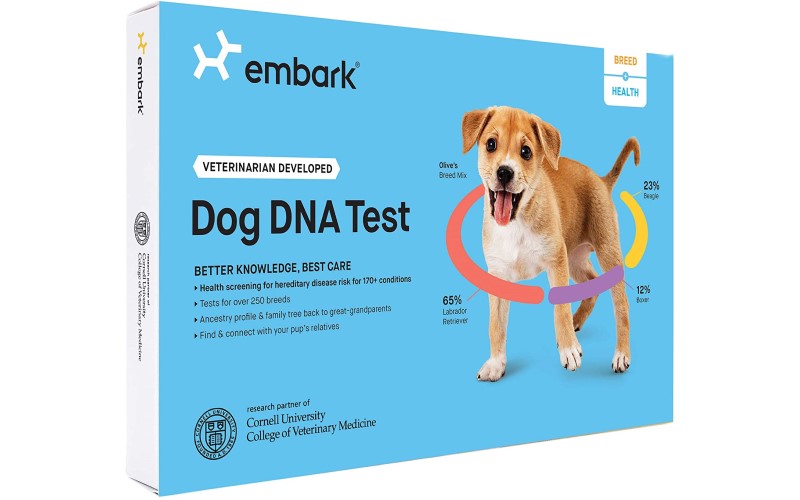Best DNA Kits
Discover who you are and where you come from with an in-depth analysis of your genes. Here are the best DNA kits.

I spent close to a year testing several DNA kits, alongside friends and family members, and comparing the results. 23andMe, while expensive, gives you the biggest picture of who you are, where you came from, and who you are related to. The more people you can connect with through DNA shared results the more defined your final report will be. Millions of people have used 23andMe so you probably have a few dozen relatives ready to connect already. But there are some other options that don’t cost as much and still provide important information.

23andMe
A detailed map of your past
23andMe accesses thousands of regions to pinpoint enough data to create a minimum of 50 reports about you and your family.
Pros:
- Comprehensive data
- Pinpoints countries, counties, and cities of origin
- Connects with family members
Cons:
- Large sample needed
- Limited ancestry tools
23andMe collects a lot of saliva by having you spit into a collection cup after fasting - including no smoking or gum chewing - for 30 minutes. As you spit, you need to move the collection tube around, otherwise, it looks like you’ve given enough but in reality, you are far from reaching the fill line. Once collected, close the test tube and send it to the lab using the included return box.
It typically takes up to 8 weeks for your results to return because of the amount of data it pulls from your DNA and the number of reports you get. When you do get your results you will have over 50 different reports. 23andMe analyzes both the autosomal and mitochondrial DNA and taps into records from more than 1500 regions to give a good map of where your ancestors lived. Together you will see specific countries, counties, and in some cases cities where your ancestors hailed from.
Besides the long wait for results and the 5 minutes it takes to collect enough spit to sample, 23andMe doesn’t have the family tree tools that come with other programs. You can still connect with individuals who have also submitted their DNA and gave permission to have their results shared, but there isn’t any way to create genealogy records or in-depth family trees.

AncestryDNA
Connect then and now
AncestryDNA has billions of databases to help you find both living relatives and your ancestors from all over the world.
Pros:
- Create family trees and other genealogy records
- Connect with living relatives
Cons:
- Long turnaround times
- Some tools require a paid subscription
AncestryDNA isn’t as comprehensive as 23andMe, but it gets close. You need to give a saliva sample by spitting into a collection tube that is then set to Ancersty’s labs. The results are then posted in your online portal. AncestryDNA looks at over 500 geographic regions and gives you details about your family such as immigration routes and timelines. But my favorite feature of this program is its comprehensive genealogy tools.
This DNA kit connects to over 15 million databases, including Ancestry.com and FamilySearch to help identify specific ancestors and create impressive family trees and genealogy records. With an Ancestry.com account, all this information can be automatically transferred to your genealogy records including family trees. Because of how extensive the databases are, AncestryDNA connects you with more living relatives than any other DNA kit.
Most people that I’ve seen use this DNA kit received their results within six weeks of sending in their sample. However, my results took 10 weeks. Ancestry has additional DNA matching and ancestry tools available, but you will need to pay for additional test kits or pay a monthly subscription fee to access some of these. But most people will find the AncestryDNA kit is good enough.
Get the world’s most fascinating discoveries delivered straight to your inbox.

Familytree DNA
Breaking down the details
FamilyTree DNA breaks down DNA results by parents so you can see exactly which side of the family you get specific traits.
Pros:
- Breaks down results by parent
- Small sample needed
- Quick turnaround times
Cons:
- Reports aren’t detailed
- Quirky registration process
FamilyTree DNA taps into nearly 1 million databases and over 24 geographic regions to help discover your ancestry, both geographical and ethnic information. It has one of the fastest turnaround times of all DNA kits and, if you’ve already taken a DNA test, you can upload the raw DNA results to FamilyTree DNA and tap into even more reports and results, including paternity results.
This DNA kit is especially helpful in determining paternity. This is because FamilyTree DNA breaks down its reports to show just one side of the family or the other. Your report will show which ethnicities come from your mother’s side and separate them from your father’s. And if you just want one parent, FamilyTree DNA will show you just that one.
FamilyTree DNA only requires a cheek swab in order to get paternity or more in-depth ancestry DNA results. Your sample is processed onsite in FamilyTree DNA’s own testing laboratory, so there is a small chance of your results being compromised. However, FamilyTree DNA is quite liberal when it comes to sharing DNA results with law enforcement. They typically do not require a warrant before providing information during criminal investigations.

Embark dog DNA
This one’s for the dogs
Embark is the DNA kit for dogs with over 250 breeds represented and 160 genetic health traits.
Pros:
- 250 dog breeds recognized
- Health analysis also included
- Connect with related dogs
Cons:
- Lots of unnecessary emails
I didn’t actually test this particular DNA test, but I have had several friends that have used Embark and found it to be very helpful in determining the breeds that make up their lovable companions. This DNA kit was developed with the veterinary college at Cornell University and recognizes over 250 dog breeds.
The Embark Dog DNA test also looks at genetic marks that show if your dog is prone to any genetic diseases like glaucoma, drug sensitivity, and heart problems. Knowing what your dog may be prone to can help you choose foods and exercise routines to help reduce the risk, or better prepare for future possibilities.
As with human DNA kits, Embark lets you register your kit and share your results through an online database. If other pet owners have shared their dog’s results, Embark will show how your dogs are related. Just be prepared to be inundated with a lot of follow up emails about Embark and its services. They are pretty spam-heavy after you’ve become a client.
A string of DNA thoughts
When it comes to DNA, the more information you can get the better in not only figuring out where you come from but knowing the ins and outs of what makes you, you. 23andMe gives you the most details about your ancestors. You get an ethnic breakdown and geographical data down to the city where your ancestors lived. In all, you have over 50 different DNA reports to browse through to learn when, where, and how your forebears migrated. As more and more people use 23andMe and allow their results to be shared, you will connect with more living relatives and see just how you are connected. This DNA kit doesn’t have a lot of genealogy tools, like family trees, to store this information, but the details are what make this kit the best. You can purchase additional DNA kits for health analysis and more detailed DNA results.

Nikki writes for multiple Future Publishing brands covering topics from antivirus to kitchen appliances to SAS. She has over 15 years of research and writing experience, including eight years of testing and reviewing consumer products. Nikki earned bachelor’s degrees in both English and Political Science with a focus on empirical research. In her spare time, Nikki serves as a member of several school councils and volunteers for a local arts board.


